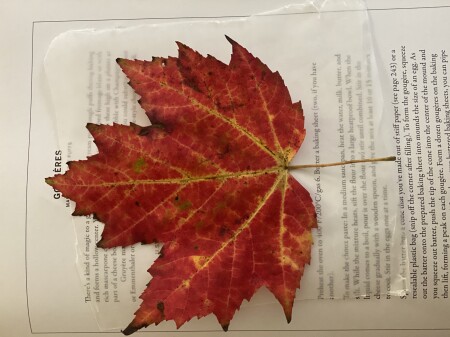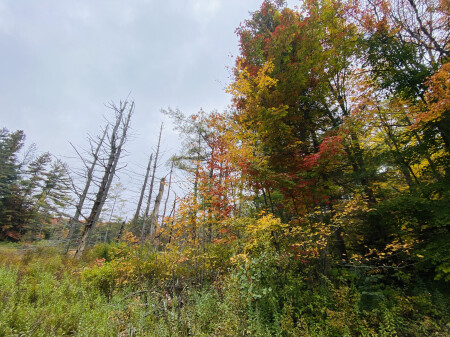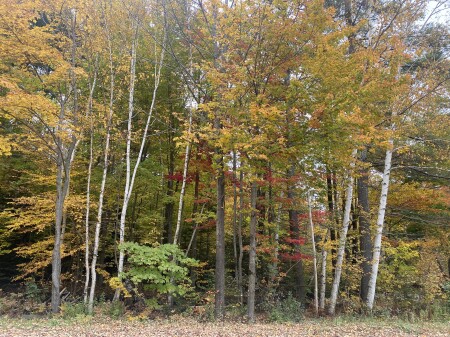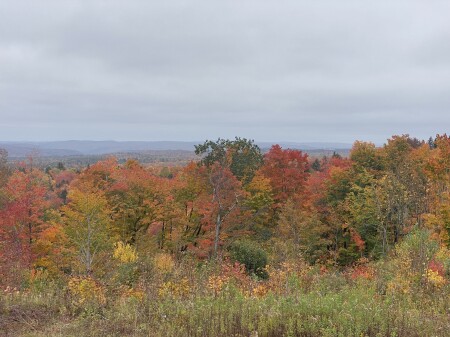
“When signaling their ‘belonging’ to the place or waterways, Indigenous peoples referred to the ‘interdependent relationship with a diverse environment’ and the responsibility of individuals towards their community and human and non-human others.”
— excerpted from https://indigenousnh.com/
Recently I had the pleasure of hearing Judy Dow speak about the notion of land acknowledgements. Here in Vermont, Judy Dow is a highly respected authority on Abenaki culture. The Abenaki were and are the original inhabitants of this land we live on.
When I first started learning about land acknowledgements through my work on the board and as a parent at Hilltop Montessori School, I thought of land acknowledgements as a practice of acknowledging the Abenaki and their original presence on our land — not as owners of the land, because the Native Americans did not “own land” in the way that we immigrants do today, but as people who abide on the land.
As Judy Dow explained, this difference is critical to land acknowledgements, because, in practice, land acknowledgements really aren’t about the people but the land and the experience people have on the land over time and cultures. Land acknowledgements are essentially stories about the land as it’s experienced right now.
In that spirit, a land acknowledgement on Indigenous People’s Day:
We drove the leaf-peeper circuit in our big road machine, following the contours of the land on pavement and dirt. Lining the road were seasonally cycling trees and the evergreens, with their own ways. The fir trees endure the winter with their hard waxy needles and their bell curves shaking off the snow. The maples, beech, and my beloved birch (silver, white, yellow) make the choice to excommunicate their leaves every autumn. First, they suck the vibrant green chlorophyll back into their core, revealing the lush reds, oranges, and yellows that were there all along. Then, they cut off the channel to each leaf, and eventually, abandoned by their mother, the leaves fall and decay from luster to loam.

This is a routine they’ve enacted for centuries, although here in Vermont, the land is mostly new growth. When the Abenaki were the majority population on this land, trees were older and bigger. My Puritan ancestors came and chopped them all down — along with most of the Abenaki people — to create timber and make room for sheep and their moral convictions, which had driven them away from England in search of a place where they could practice religious oppression more freely.
The trees came down, and in their place, stone walls grew, connecting the land but also parceling it off into a new paradigm of “land ownership.” Today, you can download an app called LandGlide that shows you who “owns” what land.

The land is not aware it is owned. It exists in perpetuity, often altered by man, sometimes left wild. Regardless, it does what it does. The trees come down, and new trees spring up. The sugar maples are tapped for their sweet sap every year; still, they drop their fiery red leaves each fall like they always have — except this year, when the incessant rains have mildewed the maples and the crimson is conspicuously absent from the foliage display. Soon, they’ll be spartan save the sweet blue sugar lines that the people have used to connect them in anticipation of the sap that will run in spring.
We drive the land, in and out of new-growth forest, up and down Vermont’s rolling green mountains, from Guilford to Stratton and back. Coming over the crest of Stratton Mountain, we drive through riparian ecosystems flanked by luscious fall colors. That vista soon opens up to farmland with a backdrop of ’70s upholstery-shaded hills. I get out of the car to take a picture, and off in the distance, hear a rooster screaming.

On the other side of the hills, we stop at Hogback Mountain, with the other tourists. (From the point of view of the land, we are all ultimately just tourists here.) We walk the trails that traverse through the old ski hills, past the remnants recent white humans have left: fossilized ski lifts, small signs explaining the habits of garter snakes, owls, and other woodland creatures. One sign mentions the Moose, our largest deer, once driven to extinction in these woods and now slowly making its way back as the trees return.
I choose leaves with my daughters. We’ll carry these hued mementos home to press between books. Sometime in the next year, while looking for a recipe, I’ll find them, forgotten. I’ll remember this day we spent appreciating this land.

Thank you for sharing this beautiful piece Joslyn!